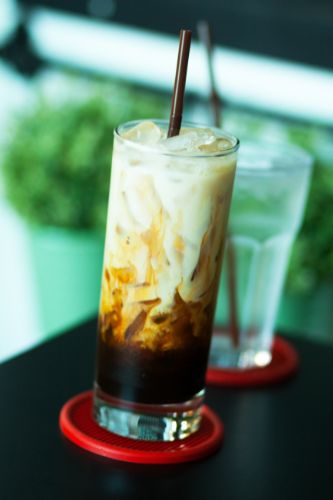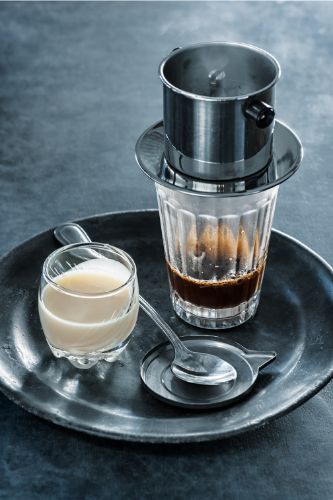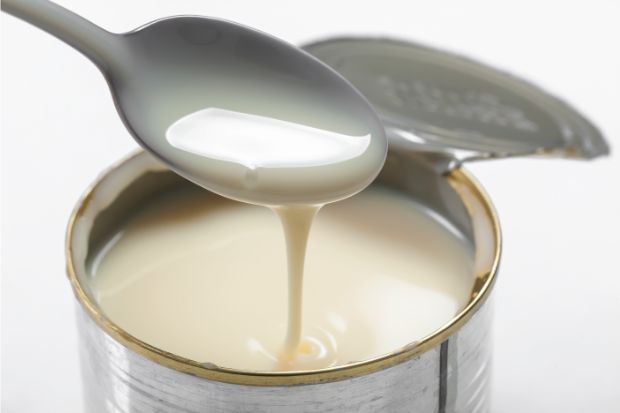Just so you know, as an Amazon Associate we earn from qualifying purchases made via bold red links, buttons or images.
Last Updated on December 9, 2023
If you’re an avid coffee lover, you may have encountered Vietnamese and Thai iced coffee styles. While these coffee drinks may seem similar, they have some distinct qualities that can suit your individual coffee preferences. So let’s dive into the world of Thai iced coffee vs. Vietnamese iced coffee to see what they’re both about.
What Is Thai Iced Coffee?

If you were to order this coffee in Thailand, you would ask for an “oliang.” This iced coffee blend uses robusta beans, local spices, and sugar. In most cases, brewers use brown sugar instead of granulated white sugar. Some versions use condensed milk or evaporated milk or sweetener to make the beverage smoother and tastier.
Thai coffee can be traced centuries back, but the country didn’t become a world player on the coffee stage until the mid-1970s. The king of Thailand decided to boost the country’s coffee exports to make money and to help improve Thailand’s image as a global commercial powerhouse. Today, the country is the third-largest coffee producer in Asia.
What Is Vietnamese Iced Coffee?

Did you know that Vietnam is the world’s second-leading coffee exporter after Brazil? This status is even more remarkable when you consider the fact that the beverage came to the country in the 1900s. Before then, Vietnamese people drank tea while coffee was virtually nonexistent. Once the new drink arrived, however, it became a part of Vietnamese culture.
This iced coffee is also made from robusta beans because Arabica beans are hard to grow in the region.
Vietnamese iced coffee also includes condensed milk, which is a holdover from the country’s occupation by French nationals. Since it wasn’t suitable to transport fresh milk to Vietnam, French colonists had to use condensed milk for their coffee.
This style of coffee also uses a small drip filter for extracting flavor.
Thai Iced Coffee vs. Vietnamese Iced Coffee
Already we can see that there are some major differences between these coffees. But to give you a clearer picture of these discrepancies, let’s break down Thai and Vietnamese iced coffee by various criteria, such as their flavor, preparation methods and varieties.
Flavor
As a rule, Vietnamese iced coffee has a much sweeter and smoother flavor, while Thai iced coffee has a more complex and bolder flavor. The primary difference here comes down to the ingredients. Vietnamese coffee is sweeter because of the addition of sweetened condensed milk. Adding this ingredient on top of sugar enhances the flavor and makes it go down more easily.

Thai iced coffee uses coffee grounds mixed with local spices, the most prominent being cardamom. You get a more complicated flavor profile, made all the more intense by adding cream and brown sugar. If you really want to taste your coffee, Thai is the better option. If you want something sweet and refreshing, Vietnamese coffee is your pick.
Brewing Methods
Because Thai iced coffee uses other spices and ingredients, the roasted coffee beans must be ground up first. Then the entire mixture is brewed into coffee and served over ice with cream and sugar.
For Vietnamese coffee, brewers use a drip filter called a phin. To ensure the water absorbs as much flavor as possible, the metal filter works slowly, often taking 10-15 minutes for a single cup.
Nguyen Coffee Supply makes a phin filter that has very good reviews:
https://m.media-amazon.com/images/I/41R6hih9oHL._SL500_.jpg
Check availability
Coffee Beans Used
Since Arabica beans don’t grow well in Southeast Asia, both countries specialize in robusta beans. These beans are more bitter and have an intense aftertaste. This is why traditional Thai and Vietnamese iced coffee use sugar and other ingredients to cut down the bitterness to make the beverage more accommodating.
Health Benefits
Technically speaking, Thai iced coffee is slightly healthier for you than Vietnamese coffee. However, what really matters is how much cream and sugar you put into your Thai coffee, as those ingredients can be bad for your health. That said, Vietnamese coffee is almost always unhealthier than Thai varieties because of the sweetened condensed milk. This component adds a lot of sugar and calorie content to the beverage, so you should drink it in moderation if you’re on a diet.
How To Make Thai Iced Coffee
In both cases, what matters are the ingredients you use for your iced coffee recipe. While you can try to make your own ground coffee from scratch, it’s much better to buy pre-mixed grounds from Thailand. If there’s an Asian supermarket in your area, they should carry bags of coffee grounds. You can also look for different types of roasts, such as light or dark roast coffee, based on your preference.
When making Thai iced coffee, you can increase the sweetness by adding condensed milk to the beverage. Or you can simply steep your coffee grounds and add some cream and brown sugar until the sweet coffee fits your tastes.
Traditional Thai iced coffee uses a filter called a tungdtom. Basically, this is a muslin mesh bag attached to a metal ring with a handle. All you need to do is put your ground coffee beans in there and pour hot water inside the bag. The coffee will drip out into the heat-resistant container of your choice.
Overall it takes about five minutes to brew your coffee, and then you can pour it over ice and add secondary ingredients to your Thai coffee beverage.
Note that some coffee experts believe that Thai iced coffee, like Vietnamese iced coffee, should be made with condensed milk. So feel free to include condensed milk in your recipe if you’re into that.
How To Make Vietnamese Iced Coffee
If you want to go the traditional route, you’ll need a phin authentic coffee filter to brew your coffee with. This piece is small enough to fit over your mug, but you won’t be able to brew more than one cup at a time.
Ideally, you’ll use authentic Vietnamese coffee grounds for your beverage. However, the chicory coffee brand Cafe Du Monde is very popular in Vietnam, and you can buy tins of that coffee more easily.
https://m.media-amazon.com/images/I/51elbGOIgxL._SL160_.jpg
Check availability
First, steep your coffee grounds in the phin with hot water. (It may be easier to pour your hot water with a gooseneck kettle.) Once the filter is empty, you can pour the flavorful coffee over ice with sweetened condensed milk.
If you want to add extra flair to your Vietnamese iced coffee drinking experience, you can add sugar to your cup of coffee. However, the condensed milk should be sweet enough, unless you use light-roasting coffee beans.
The Bottom Line
As you can see, both Thai and Vietnamese iced coffees are enjoyable beverages that work well for coffee drinkers on hot summer days. Now that you know the differences, you can sample both and see which delicious drink you like best. You may just discover your new favorite coffee!
After you’ve mastered these drinks, learn how to make Japanese iced coffee.


